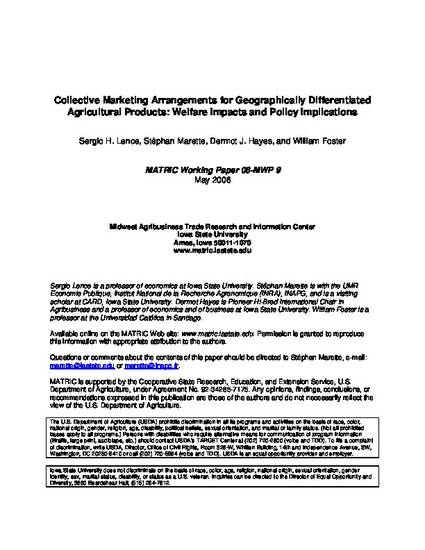
This paper examines the incentive of atomistic agricultural producers within a specific geographical region to differentiate and collectively market products. We develop a model that allows us to analyze the market and welfare effects of the main types of real-world producer organizations, using it to derive economic insights regarding the circumstances under which these organizations will evolve, and describing implications of the results obtained in the context of an ongoing debate between the European Union and United States. As the anticipated fixed costs of development and marketing increase and the anticipated size of the market falls, it becomes essential to increase the ability of the producer organization to control supply in order to ensure the coverage of fixed costs. Whenever a collective organization allows a market (with a new product) to exist that otherwise would not have existed there is an increase in societal welfare. Counterintuitively, stronger property right protection for producer organizations may be welfare enhancing even after a differentiated product has been developed. The reason for this somewhat paradoxical result is that legislation aimed at curtailing the market power of producer organizations may induce large technological distortions.
Available at: http://works.bepress.com/dermot_hayes/23/
